Tomato plants are widely favored in gardens for their ability to enhance the flavor of countless recipes.
But getting them to grow can be tricky.
Whether you have bought a tomato transplant or nurtured a tomato plant from tomato seeds, you’d like to transplant it to another location.
Transplanting tomatoes is a crucial part of their growing process, where timing holds considerable significance for tomato crop.
A misstep in this phase could spell irreparable damage to your precious plant seedlings. So, it is crucial to understand the optimal window to transplant tomato seedlings.
When does this window close?
Today, in this article, we will discuss all the details about transplanting tomatoes.
So, without further ado, let’s begin!

When Is It Too Late To Transplant Tomato Seedlings and Tomato Plants?
Though transplanting tomatoes can be a delicate process, it is crucial for their growth and ultimate yield.
Therefore, understanding the ideal timing for the process is the key to ensuring the best possible outcome – that’s what you want, right?
Whether you are starting seeds indoors and want to transplant your tomato seedlings outdoors or want to relocate your plants within your garden, knowing when it is too late to plant tomatoes is vital.
Let’s discuss both of these conditions in detail.
Transplanting Tomato Seedlings from Indoors to Outdoors:
Tomatoes usually start as seeds growing indoors before moving to the outside.
When they’re young, they’re delicate and need an indoor environment to start. But as they grow, they need more space and sunlight.
Once they’ve grown a bit, you gently move them from their indoor pots to the outdoor garden.
This phase is quite sensitive because if you transplant them too early, they may not survive the cold damage. Contrarily, transplanting them too late might not give them adequate time to settle before the growing season ends.
So, the optimal time for transplanting tomatoes is when the soil is warmer, and the risk of frost is gone. It helps them adjust to the outdoor environment and continue growing.
Transplanting Tomatoes From One Place to the Other in the Garden:
Sometimes, you might want to change the tomato plants’ address in your garden. However, just as moving houses can be stressful for us, the same goes for your plants.
To make sure they settle into their new spot happily, avoid transplanting your tomato plants if they get 10 inches in height or higher than that – now it is too late to transplant your plant.
At this stage, while they can still yield a decent harvest, doing so can stun and weaken the plant, making it more susceptible to disease and pests.
For a hassle-free move, aim to transplant your tomato seedlings when they are around 4 inches tall. Additionally, be mindful of the weather conditions. Choose a day when the weather is calm and nice.
It helps them adjust to their new home without feeling too much of a change.
NOTE: The ideal transplanting time may vary slightly for different tomato varieties or specific regional climates. It’s a good practice to also consider local gardening recommendations or consult with experienced gardeners in your area for more precise advice.
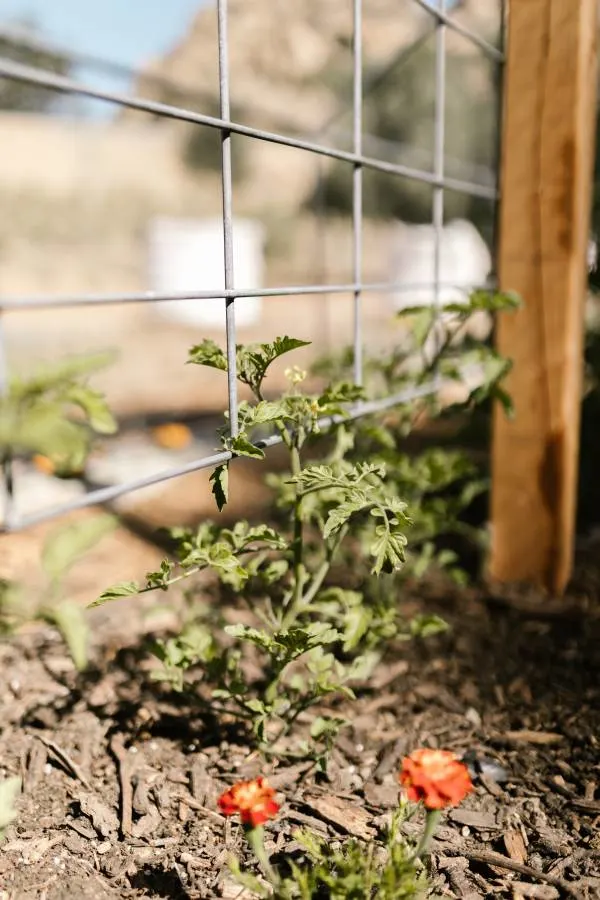
Why Should You Transplant Tomatoes?
Typically, tomatoes are started indoors because this gives the plant a head start before it can grow outdoors.
Transplanting allows the plant to grow in a new and more suitable environment.
Though transplanting tomatoes might sound like a hassle, it is essential in helping these plants grow strong and healthy.
Moving them outdoors allows them to get more sunlight and access to the nutrients in the soil, helping them become stronger and bear more delicious fruit. Transplanting outdoors also helps them prevent diseases, which can occur when a plant weakens from the lack of space in the container or a lack of nutrients – so, it’s a win-win situation.
Essentially, it’s all about giving these plants the best chance to grow big, strong, and full of tasty tomatoes!
How to Prepare Your Tomatoes for Transplanting?
Before transplanting, getting your tomatoes ready for their new outdoor home is necessary.
Hardening off the tomatoes is the crucial step in this regard. It involves letting them spend time outside during the day to get used to the weather and sunlight. Meanwhile, their future garden spot needs to be all set up.
So, make sure the soil is nice and ready by adding some compost or other nutrients to the soil. This way, the soil will be full of the good stuff to help your tomatoes grow big and tasty.
This whole preparation is like giving your tomatoes the best start for their outdoor journey, making sure they’re ready to grow strong and give you a bunch of delicious fresh tomatoes too!
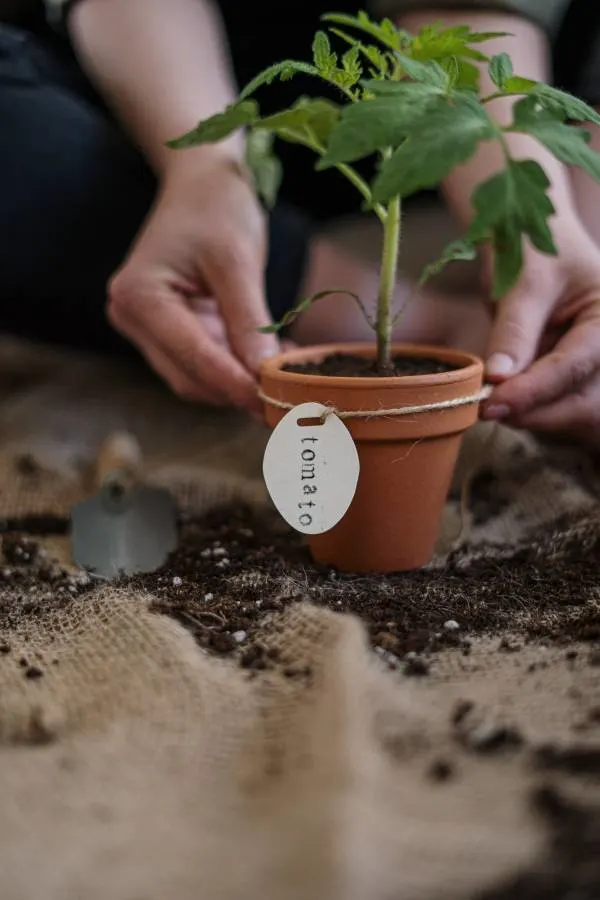
How to Transplant Tomatoes Outside?
Moving tomatoes from their indoor pots to the big world outside might seem like a big change, but it’s pretty simple once you get the hang of it.
After hardening off (which typically takes 1-2 weeks), you have to wait for the right time – when soil warms up and the risk of frost is gone.
Next, dig a hole in the garden soil that is deep enough to bury the roots and part of the stem.
Now, remove the lower leaves to avoid soil-borne diseases.
Gently take the tomato plants out of their pots and be super careful with their roots.
Place them in the holes and cover them up with soil, like making sure they’re snug in their new bed.
Lastly, give them a good drink of water, just like quenching their thirst after a long journey.
This whole process is like helping your tomatoes settle into their new outdoor home, making sure they’re all comfy and ready to grow big and strong!
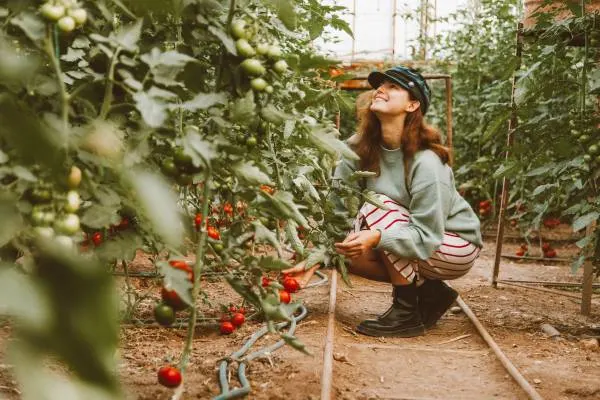
How to Protect Tomatoes from the Cold?
Just like many other plants, tomatoes require warmth to grow and stay happy and healthy.
Therefore, when it’s cold, they need your help to protect themselves.
Feeling worried? Don’t need to be!
There are some easy ways to protect your pals from cold.
These include:
Growing Tomatoes in a Greenhouse to Protect Them From Cold:
Growing and planting tomatoes in a greenhouse is like giving them a special place where they’re shielded from harsh weather.
The temperature inside a greenhouse can be hotter than outside, so in a greenhouse, they get plenty of sunlight and warmth even when it’s freezing outside. But make sure to provide ventilation on a hot day with a lot of sunlight; otherwise, your plant will get too hot.
So, remember to keep an eye on the temperature inside to keep your plants happy!
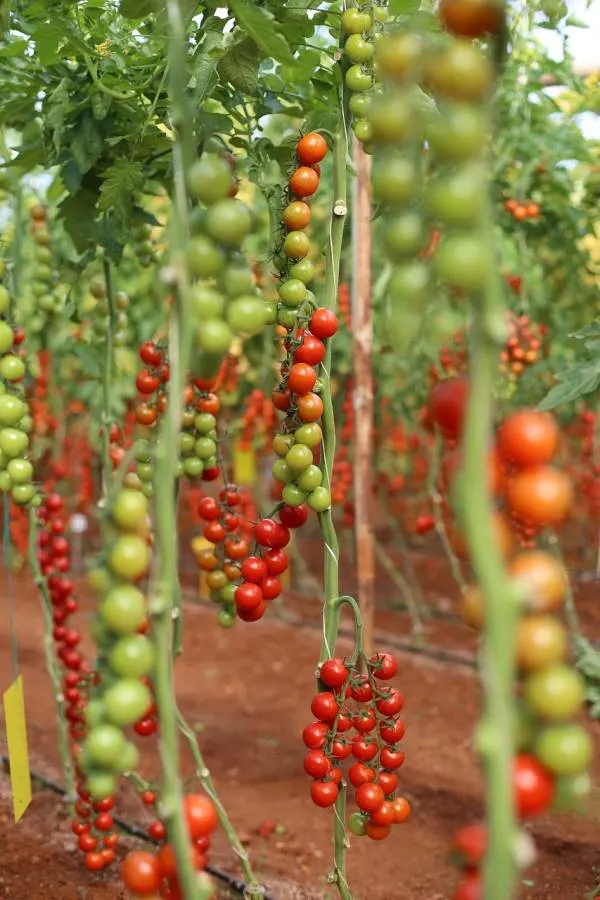
Using Row Covers to Protect Tomatoes from Cold:
Row covers also work like a shield that guards the tomatoes from the cold.
These covers are made of light material, like a cozy blanket, and they trap some warmth while still allowing sunlight and air to reach the plants.
You drape them over rows of tomatoes, securing the ends so they don’t blow away.
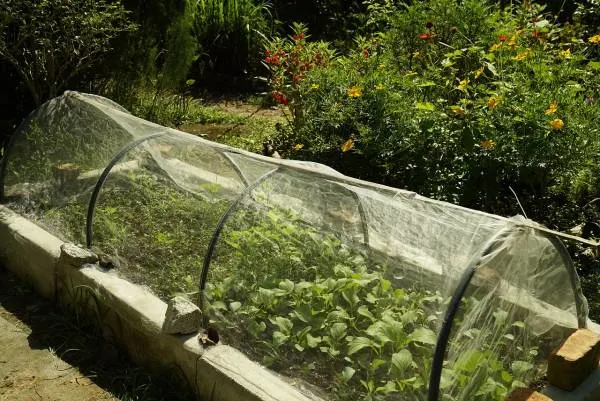
What Happens If Tomatoes Are Transplanted Too Late?
For tomatoes, being transplanted too late means they have to do more struggle to settle into their new outdoor spot.
They prefer moving when it’s not too hot or too cold.
But, if you transplant your tomatoes too late, they might face issues from the heat in the summer or alternatively with cold in the early fall.
Transplanting Tomatoes Too Late Can Cause Problems with Heat
One significant problem you may encounter when planting too late in the summer is heat.
Tomato plants will delay or won’t produce flowers if the temperature is too high.
Higher temperature also leads the soil to dry out faster, and young tomato plants don’t have established roots. As a result, they can’t handle long periods without water, and you have to work hard to keep them moist.
Transplanting Tomatoes Too Late Can Cause Problems with Cold
If somehow you manage to protect your plant from the intense heat of summer, you still need to worry about the fall.
Tomatoes cannot grow in temperatures below 50 degrees Fahrenheit, and in the fall, temperatures drop closer to frost. The cold can slow down their growth or even damage the plants, making it hard for them to survive.
Note: If you want to know about the planting season of tomatoes in different states of the USA, visit our Blog.
That’s all for today!
Now, it’s time to move towards the conclusion.
Conclusion!
Transplanting tomatoes is something like finding the right time to start something new – it’s all about timing!
Whether you’re moving them from inside to outside or giving them a new garden spot, doing it just right is key.
Remember, wait for the first frost to say goodbye and for the soil to be nice and warm if you want healthy transplantation. Too early, and they might catch a chill, too late, and they might struggle to settle in.
But why transplanting them is necessary?
It’s all about giving tomato seeds and these plants space to stretch to produce big and tasty tomatoes.
Oh, and don’t forget to protect them from the cold – use a greenhouse or cozy covers to keep them snug when it gets chilly.
Remember! Be patient, choose the right time, and watch those tomatoes grow big, strong, and full of flavor.
It’s all about giving them the best start to flourish in their new outdoor home!
Regards,
Moiz Atiq.
